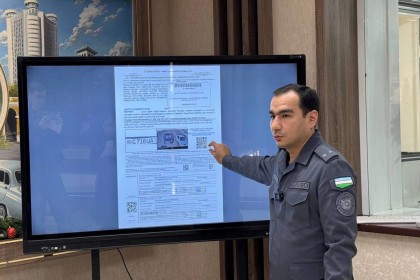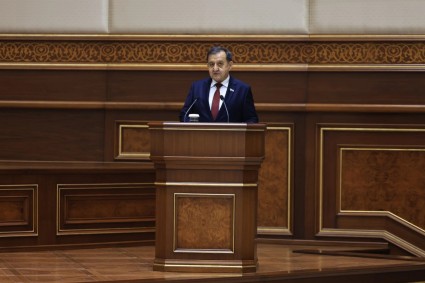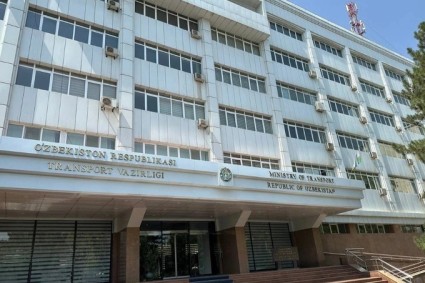With 4.2million people, or 18.4% of Uzbekistan's adult population, identified as multi-dimensionally poor, the United Nations Development Program (UNDP) is launching critical initiatives to address this issue.
The UNDP Office in Tashkent, Anas Qarman, the interim UNDP Resident Representative told Daryo.uz in an interview.
Launch of the MPI Pilot Program
A significant milestone has been the launch of the national Multidimensional Poverty Index (n-MPI) pilot program. The MPI goes beyond income to measure various aspects of poverty, including access to quality education and food security. "This pilot in Uzbekistan revealed that approximately 18.4% of the adult population, around 4.2 million people, are multi-dimensionally poor," Qarman explained. The findings also highlighted regional disparities, with Karakalpakistan, Namangan, and Tashkent regions exhibiting the highest levels of multidimensional poverty, and rural areas facing higher poverty rates compared to urban ones.
Key findings
- Around 18.4% of the adult population (4.2million) are multidimensionally poor because they experience deprivations in at least 34% of the weighted indicators.
- The average intensity is 43.7% meaning that each multidimensionally deprived adult is, on average, deprived in more than one-third of the weighted indicators.
- The pilot N-MPI amounts to 0.080, indicating that multidimensionally poor adults in Uzbekistan experience 8 percent of the total deprivations.
- The main contributors to the pilot N-MPI are Educational attainment (13.7%), Food security (11.7%) and Informal employment (11.5%).
- The highest proportion of the adult population that is poor and deprived is found in indicators such as Sanitation (14.0%), Bank account (13.9%), Educational attainment (13.2%), and Heating Fuel (13.0%).
- The Republic of Karakalpakstan (29.9%), Namangan region (27.5%), and Tashkent region (26.5%) have the largest proportion of multidimensional poor adults.
- The incidence in rural areas is significantly larger (23.2%) than in urban areas (13.9%).
- The incidence male population is higher (21.6%) than female population (15.2%).
Challenges and Implementation
Defining poverty comprehensively posed significant challenges, requiring extensive consultations with both national and international experts. "Building a structural framework for the MPI involved establishing accurate indicators with input from various stakeholders," Qarman noted. The next phase involves integrating the MPI into government policymaking, enabling officials to make informed decisions and allocate resources to support those in need. "The next step is to integrate the MPI into government policymaking," he added.
Collaboration with the Government
Successful implementation of UNDP initiatives in Uzbekistan has been bolstered by strong collaboration with the government. Qarman emphasized the importance of genuine ownership from local stakeholders, capacity building, and empowering national systems. "Successful collaboration with the government requires genuine ownership from stakeholders, capacity building, and empowering national systems," he said. The commitment demonstrated by various ministries and institutions in Uzbekistan has been crucial. Partnerships with organizations like the World Bank and UNICEF also play a vital role in building capacity and supporting national systems.
Impact on Policymaking
The MPI framework provides a solid basis for evidence-based policymaking and targeted interventions. Drawing parallels with countries like Armenia and Costa Rica, Qarman explained how Uzbekistan can use the MPI to address regional disparities and support vulnerable groups. "The MPI provides a solid framework for evidence-based policymaking and targeted interventions to alleviate poverty," he remarked. By tailoring programs to Uzbekistan’s strategies and providing data on specific needs, international organizations can effectively support the country's development goals.
Visible Benefits of UNDP’s Work
UNDP’s work in Uzbekistan has already produced tangible benefits. Public service delivery centers have been established, streamlining access to essential services for the population. "Development work often takes years to show its full impact. However, in Uzbekistan, we have many examples where people have felt the benefits of our work," Qarman said. Legislative support has also been a focus, with new laws criminalizing domestic violence and lifting the ban on women driving buses. These reforms represent gradual yet impactful changes contributing to sustainable development.
Looking Ahead
Looking ahead, Uzbekistan aims to halve its poverty rates by 2026 as part of its Uzbekistan-2030 Strategy. Achieving this ambitious goal will require coordinated efforts from all stakeholders, including the international community and the people of Uzbekistan. "Uzbekistan aims to halve its poverty rates by 2026 through its Vision 2030 development plan," Qarman said. "While this is an ambitious goal, it is attainable with serious efforts and coordination from all stakeholders."
Human Development Report and Collaboration
The Human Development Report emphasizes overcoming political divides to prioritize human security and empowerment. By tailoring programs to Uzbekistan’s strategies and providing data on specific needs, international organizations can effectively support the country's development goals. "The Human Development Report calls for prioritizing human security and ensuring people feel empowered," Qarman explained.
The UNDP's initiatives in Uzbekistan are driving significant reforms and addressing multifaceted poverty. Through the national MPI pilot program, collaboration with the government, and impactful legislative support, the UNDP is playing a crucial role in the country's journey towards sustainable development. "It's an honor to be part of Uzbekistan's development journey," Qarman concluded.













